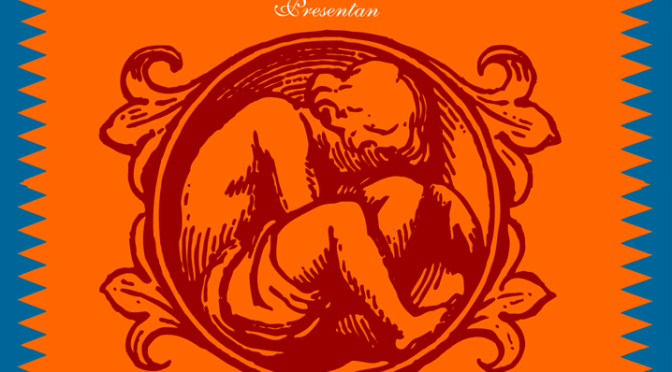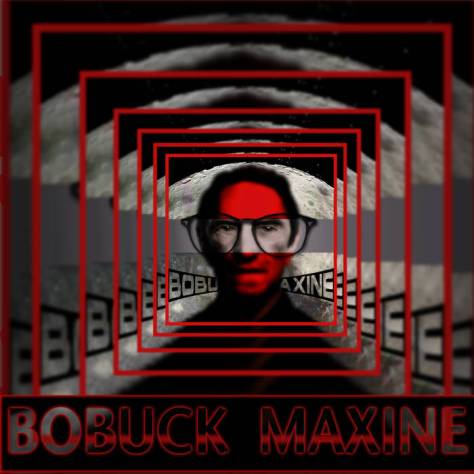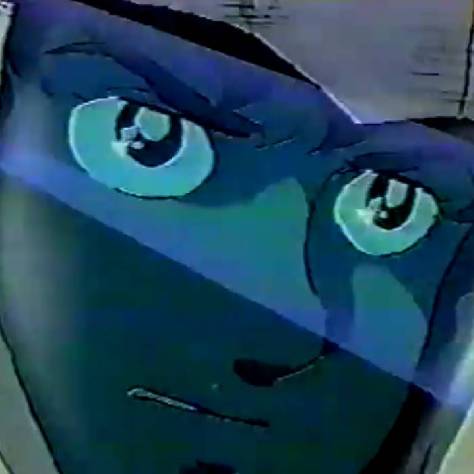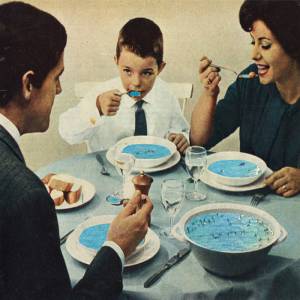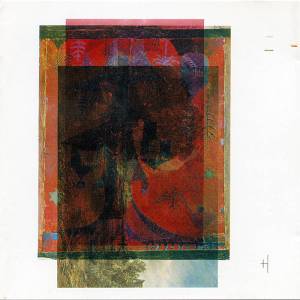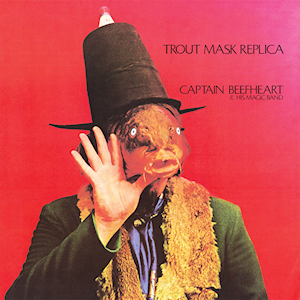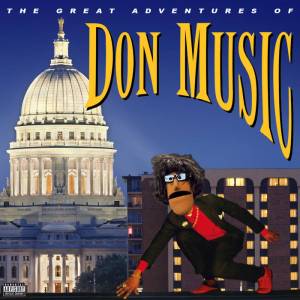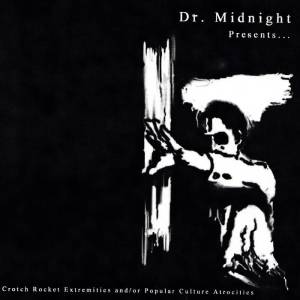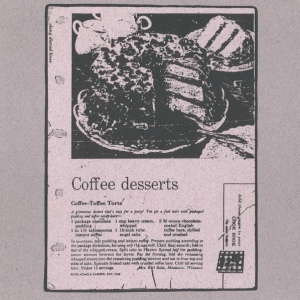Francis Framar was the first Fraticórnicos album. The first recorded, the first released, and the first with the original line-up, the duo of Pelo and Mecko. It was produced entirely with toy instruments, really cheap electronic keyboards and toys that produce sound. However, Pelo and Mecko, being their naturally and God-blessfully-talented selves, were able to take these kinds of instruments and create atmospheric, experimental, transcendent landscapes of sound that, upon listening, will make your eardrums smile and think to themselves, “How did they do it?”
Musically, the album owes no small debt to the Residents, one of the group’s biggest influences. It’s very artistic and well-crafted. The cheap keyboards and toy instruments were played in a very ornate, graceful and experimental fashion. At times, at least according to me, parts of the album has a classically-trained sound and gets to the point where the album could be placed into the progressive electronic category (a spot that features the likes of Vangelis and Tangerine Dream). The album is that awesome!
Conceptually, the album was the first of many concept albums that Fraticórnicos had worked on, and the concept is something that most people would be shocked at. Even though it’s mostly instrumental (only 5 of the album’s 21 tracks have actual vocals and lyrics), Francis Framar is a psychological horror type of story chronicling the embarrassing legend of the eponymous child of a family in a town of the Argentine interior (which is called America, according to the album’s commentary), who committed perverse and impure acts to toys, furniture and appliances. Despite all of this, according to some translation and proofreading, the lyrics were written in a way that is non-explicit and watered-down in terms of content, meaning that the lyrics were completely tame, so the album is not particularly obscene.
Recently, I decided to conduct another Q&A interview with Mecko, the group’s co-founder and most-prominent member. I just thought of doing this special interview because, after all, Francis Framar was the group’s very first album!
QUESTION #1
Tré: What directly inspired the album’s theme? Were there any movies, documentaries, books or whatever that played a big part in the making of the story?
Mecko: It’s the story of the alleged aberrations of a country boy, normal for a city but atrocious for a provincial child, and the small mentality of the inhabitants of a remote town who refuse to be moderated or to accept things they do not understand or do not want to alter. No books were consulted. Only our experiences of having known small towns of the Interior.
Tré: Well, here in America, we would view the stuff Francis did as sickening. Even I would view it as such.
QUESTION #2
Tré: Can you list me all of the toys and instruments used on the album?
Mecko: Various toy instruments were used, such as small keyboards and guitars, which no longer exist or whose whereabouts are unknown, mostly Casios and Kawasakis, and other ones with no brand. There were always children and nephews who kept the toys after the recording [of the album was finished].
QUESTION #3
Tré: The album was recorded at a place called Estudio Sur Records, in the town of Luis Guillón. How big was the studio, and what was its atmosphere like? Are there any photos of the studio available?
Mecko: I can’t remember. It was 21 years ago!
QUESTION #4
Tré: The original 1996 version contains “Kretino & Anodina,” the shortest track in the group’s catalogue. Were the sounds real or sampled, and what scene was the track portraying?
Mecko: We stole it from a few passages from an album of a dark garage group called The Deep, a 60’s band. It represents absolutely nothing!
(NOTE: In the album’s story, Kretino and Anodina were the names of the parents of the title character. Their names are both puns, being Spanish for “cretin” and “anodine,” respectively. Another bit of information is that Francis had a wealthy, unnamed grandmother who was so rich that her fortune left no heirs after her death.)
QUESTION #5
Tré: The original 1996 mix of the opening track “Espermas (Sperm Cells)” featured a backwards sample from the pre-Fraticórnicos project Aire. Would you consider that recorded snippet (and other things Aire made) to be the Rusty Coathangers for the Doctor (pre-Residents demo tape from 1970) of the entire recorded output of Fraticornicos?
Mecko: Yes.
QUESTION #6
Tré: There was another sample at the start of the 1996 mix of “Espermas” that comes between the Aire sample and the main track’s opening synth chord (coming between 0:31 and 0:37). Was that from another pre-Fraticórnicos project, like Falcon Verde or Vietnam or whatever?
Mecko: No. Again, it was a robbery of The Deep.
QUESTION #7
Tré: What meanings do each of the sections of the “Fratiana Suite” have?
Mecko: *laughs* Nothing at all! Just cute, weird titles. Many times, the names of the tracks were thought to deceive or confuse the audience, or have dirty, hidden meanings. Many times, it is more of what the listener imagines than anything else. Fratiana is Francis’ sister, and her behaviors were sometimes bizarre.
Tré: Now, correct me if I’m wrong about the translations of each of the sections of the suite…
-Centripeta=Centripetal
-La Amarilla Ceremonia del Te=The Yellow Tea Ceremony
-Capsula Crápula=Crapulence Capsule (NOTE: It was corrected as “Mean Capsule.” Explanation below.)
-Tres Vueltas en Pony=Three Turns on the Pony
-60,000 Toneladas sin Marrón Glacé = 60,000 Tones without Blown Frosting (NOTE: It was corrected as simply “60,000 Tons without Marrón Glacé.” Explanation below.)
Mecko: “Crápula” is “son of a b*tch,” a mean person. In this case, it’s “Mean Capsule.” As you can read it, it is nonsense, but it sounds good. Marrón Glacé is an ice cream flavor.
Tré: Is it tasty? What is it made of?
Mecko: Supersuper extra sweet. It’s made with “castañas.” Chestnuts. I don’t like it, so the title refers to 60,000 tons of ice cream without that [particular flavor].
QUESTION #8
Tré: Since it was the first Fraticórnicos album, how successful was Francis Framar upon release?
Mecko: The album aroused a lot of interest due to the use of toys, since it was the first time that it was done. And, [it was] my first album after El Tercer Hombre, so our fans wanted to know about what we were up to [at the time]. They loved it. They told us about the anxiety and despair featured in the album, [and that] there are some scary moments. I remember there were psychologists trying to figure out what we tried to express. They analyzed Francis’ behaviors and noticed [something] about our joke intentions. Also, the cover art was too disturbing and, at the same time, naïve. The cassette packaging was something never seen before, with lots of folds. We were one of the first bands in Argentina to include an e-mail address in the cover, borrowed by a friend.
QUESTION #9
Tré: Since the 2016 remix of “Play-Room Engendro (Play-Room Monstrosity)” featured the voice of the title character as a baby (done by someone named Agustín), was that track meant to detail Francis as a baby? And, who was Agustín?
Mecko: Yes. It was Francis playing [with and] surrounded by toys, not exactly instruments, but all of them with [their own] sounds. Agustín is Pelo’s son. His son and my daughter were born 12 days apart.
QUESTION #10
Tré: Which machine was used to record the original album?
Mecko: [It was] an analogue 8-track tape recorder.
Tré: Reel-to-reel! YES! That’s really, really cool!
Mecko: Exactly, but that one was a little slow. The original tempos were modified by this damn machine, [which was] something I noticed during the remixing sessions. Tempos that were 130 suddenly became 128.
QUESTION #11
Tré: Were there any tracks from the 2-disc rarities set Nuestras Melodias Descartadas (Our Discarded Melodies) that were outtakes from the Francis Framar sessions? If so, which ones were they?
Mecko: No. Absolutely nothing [was there from the sessions], but there was a different mix of “Espermas,” but I didn’t know where it was [at the time of Nuestras Melodias Descartadas]. I wasn’t a big archivist of our stuff at the time, but I am now.
QUESTION #12
Tré: On the original album, how was the vocal experiment “Misterio y Defloración (Mystery and Defloration)” made?
Mecko: You mean that one with “Muebles y juguetes esperan su arroró….”?
Tré: No. The track that comes between “Boogie-Woogie en Block (Boogie-Woogie on the Block)” and “Bloqueada (Blocked).”
Mecko: No. You mean the one with a buzz.
Tré: Oh, that was a buzz?
Mecko: Actually, it was my mouth doing weird sounds, with a lot of reverb.
Tré: Considering the album was a reel-to-reel recording, was it tape reverb?
Mecko: The reverb setting was featured on the mixing table in post-production. That album needed- badly, badly, badly -a new version. The general recording conditions were very poor, with an engineer that hated us.
Tré: Claudio Galesi…
Mecko: Yes. That moronic one.
QUESTION #13
Tré: Is Framar a made-up surname, or is it not? Does it have a meaning attached to it?
Mecko: Yes. [First of all,] Francis was the middle name of a friend [of ours], a disturbed one whose voice you can hear on Brilla Tú, Gerente Loco, where he says “obertura histérica.” A demented one who told us our destinies with tarot cards. A fake witch doctor. [Secondly,] Framar is a trademark of leather jackets.
Tré: Woah! I never thought of a jacket brand like that before!
Mecko: In 1990, we attended a radio broadcast program called La Buhardilla (The Attic), in which we told weird stories. Framar Cueros was an advertiser. Francis Framar, both names of which begin with [the prefix] “Fra,” was a perfect name for the main character.
THE LAST QUESTION
Tré: Do you think that Francis Framar should be given an all-orchestral-and-choral treatment someday?
Mecko: Why not? It would be a lot of fun! Sort of an “all toy-made” version of Tommy.
Tré: “Fraticórnicos presents FRANCIS FRAMAR: Orchestrated and Conducted by John Williams”
Mecko: Sounds good to me! One more thing!
Tré: What is it?
Mecko: One of the funniest memories of those sessions was to see the faces of the studio’s owners when we opened our bags and took out our toys. “Those are your instruments?” “Yes!” “And, what else? I imagine you’re going to record something with real instruments!” “Of course! What you got?” That was the opening dialogue [at the studio].
Tré: Wow! You guys are pioneers! Adios, mi amigo! CUALQUIERISTA!!!
Mecko: Thanks to you, as always!
LINKS:
The Group’s SoundCloud
The Fraticórnicos Fan Club
The 2016 Remix of Francis Framar
My Music
The Facebook Page
